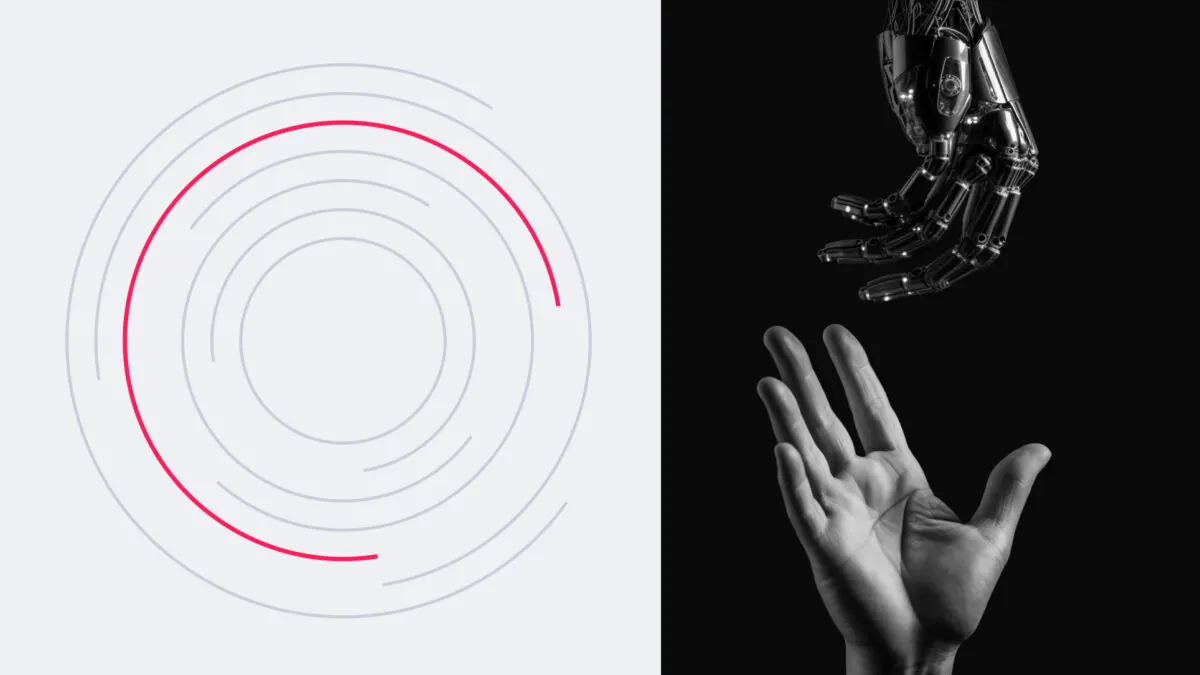Virtual digital assistants are becoming increasingly popular with businesses in different niches. Research says the intelligent virtual assistant market size is supposed to reach over $98.4 billion by 2031. In 2023, its value was at $14 billion.
Companies integrate AI-powered chatbots to achieve their goals faster and more effectively. Some of the main perks of such digital helpers include customer service automation, cost efficiency, process optimization, and many others.
If you are considering implementing an artificial intelligence assistant into your business processes and are currently searching for the solution that would fit you the most, this article is for you. We will explain what a digital personal assistant is, describe the main features and use cases, and show a top list of the most efficient and powerful solutions available.
What Is an Artificial Intelligence Assistant?
A virtual digital assistant or an AI-powered chatbot is either text- or voice-based support software that assists users in completing tasks. Since it comprehends user requests, analyzes emotions, and identifies language, it ensures a more dynamic interaction.
Unlike a regular chatbot, a virtual assistant has a more complex interactive platform. This platform lets the assistant respond based on what the user reads or hears, providing personalized, context-aware responses. Thanks to NLP and machine learning, virtual assistants can execute multiple tasks and help enhance communication between users and businesses.
Main AI Assistants Types
Now that you know the definition of what a virtual digital assistant is, let's look more into the main types of it:
- AI chatbots. These digital helpers, such as Meta's Blenderbot, communicate with users via text on websites, social media, and messengers. AI chatbots use NLP and machine learning to comprehend and process user input, provide appropriate responses, and improve over time.
- Conversational agents. Such a personal assistant uses text and voice engagement to fulfill conversation and dialogue-centric tasks. It analyses complex linguistic patterns, determines user intent, and provides relatable responses. A conversational digital assistant handles various tasks leveraging sophisticated interactions and a more intuitive UX. One of the most well-known examples is Kuki.
- AI virtual assistants. Such solutions are primarily voice-focused, with strong task execution and integration into daily routines. AI virtual assistants let you quickly access information and integrate with multiple services and apps. The most well-known examples are Amazon's Alexa, Apple's Siri, Google Assistant.
- Domain-specific virtual assistants are a specialized artificial intelligence assistant category that's tailored for particular industries, such as travel, cybersecurity, banking, engineering, etc. Bank of America's Erica is a vivid example in the finance industry.

Key Features
Digital Assistants ensure vast functionality that serves different purposes. Below, you'll find examples of the main features most virtual personal assistant solutions possess.
Retrieval Augmented Generation (RAG)
Retrieval Augmented Generation combines conventional data retrieval with AI generation to ensure higher response accuracy and contextual relevance.
This process used to require extensive manual coding — however, you can now find multiple no-code solutions. They help businesses easily integrate massive data and knowledge bases into chatbots. RAG allows digital helpers to efficiently generate high-quality, precise answers that feel authentic and natural.
Tools and integrations
One key ability of AI-powered chatbots is integrating with multiple platforms and tools. Integrations can let users connect with APIs, web searches, and third-party systems like scheduling tools. The more plugins and integrations there are, the higher-quality results you get.
Balancing knowledge reasoning vs. safety and UX
An artificial intelligence assistant should deliver intelligent responses while guaranteeing protection against improper manipulations. At the very beginning, for instance, you could apply multiple techniques to compromise ChatGPT and sidestep its security limitations. It was possible to ask unsafe questions and trigger abusive responses from the service. To avoid that, the balance in AI chatbots between knowledge reasoning and maintaining safety and user experience is crucial.
Multimodality
Multimodality allows handling inputs and outputs across multiple formats — audio, text, images, and video. For example, with this feature, you can upload a PDF or use voice commands to generate a report or summary.
Personalization
Personalization helps tailor digital assistant responses based on stored user preferences and past interactions. Using this stored communication, chatbots can adapt over time to provide more user-specific assistance without manual alterations.
Use Cases
You can use AI-powered virtual assistants in many ways, so here are some examples of how you can utilize them to your advantage.
Productivity tools
AI-powered chatbots boost productivity by integrating with data sources like email, Google Cloud services, or meeting recordings. They recap activities, provide suggestions, and propose tasks.
Media listening tools
You can use digital personal assistant solutions to monitor media and seek mentions or discussions of your brand, define your competitors, or analyze industry trends. They examine track engagement and sentiment and deliver insights to develop effective marketing campaigns and strategies. Such real-time monitoring helps your business stay ahead of the competition and quickly react to the general sentiment of your audience.
Business processes planning
AI digital assistant tools support in business process planning by analyzing data, identifying bottlenecks, and suggesting improvements. They can simulate different scenarios to predict outcomes and recommend the best course of action. This capability helps businesses optimize their operations and make informed decisions.
Coding AI assistant
Software engineers can also use artificial intelligence assistant tools for coding support. Team leads and developers tend to select on-demand AI support, thus having more control over when and how to utilize it.
Content generation and copywriting
Digital assistants are extremely useful for marketing content creation and copywriting. You can use AI to generate not only text but also images for posts, video clips, and other media to save time and reduce manual effort.
Sales outreach automation
You can use AI-powered chatbots to simplify sales outreach. You can do so by automating the process of contacting potential clients. Virtual assistants can personalize messages, schedule and send out follow-up messages, and analyze replies to enhance engagement strategies. Such an approach helps save time and increase the efficiency of your company's sales efforts.
The Best AI Assistants in 2024
Now that we've covered the key basics you need to know about digital assistant solutions let's look at the best options currently available on the market. We've gathered some of the most popular, efficient, and cost-worthy tools to enhance your business.
| Solution | Price | Key features | Pros | Cons |
|---|---|---|---|---|
| ChatGPT | Free, $20/month for the premium version Custom pricing for enterprises | Generates text Solves math problems Coding skills Conversational capabilities | STEM knowledge Writing and conversational skills | Limited access to GPT-4 for free users Boots free users down to GPT-4o-mini when at capacity |
| Perplexity.ai | Free, $20/month for a Pro version | Works as a search engine that gives personalized replies | Links to sources Access to internet Simplistic, user-friendly UI | Paid subscription required for GPT-4 access Sometimes, it provides irrelevant suggestions |
| Copilot | Free, $20/month for a Pro version | Works like a search engine that provides information on current events | Uses OpenAI's LLM Access to the internet Links back to sources | Grounded in Bing Less powerful than ChatGPT |
| Claude | Free $20/month for a Pro version $25/month for a Team version Custom pricing for enterprises | Generates summaries out of data included in uploaded files Helps brainstorm ideas Generates text and code | Supports document upload Chat controls | Vague usage cap Knowledge cutoff |
| Jasper | From $39/month | Can summarize texts and generate product descriptions and paragraphs Has over 50 different writing templates | Editing features Plagiarism checker included | No trial subscription Pricey |
| Gemini | Free $19,99/month for an advanced version | Provides writing assistance | Access to Google Decent text editing skills | Doesn't provide sources Poor coding capabilities |
| Socratic | Free | Generates conversational, human-like responses with custom graphics for children | Free to use Educational Easy to use, accessible to children | Doesn't generate text No desktop version available |
| HuggingChat | Free $4 per person/month for a team version $21 per user/month for an enterprise version | Helps create a custom chatbot based on your requests and needs | Intuitive UI Customizable | Requires intermediate / advanced skills Account is mandatory |
| ChatSonic | Free Other versions starting at $12/month | Voice dictation AI image generation | Up-to-date information Plenty of use cases Free trial available | Sign-in is mandatory Can be laggy |
Challenges of AI Assistant Adoption
However powerful and progressive, the development of AI, machine learning, and other advanced technologies can also be subject to specific challenges or stoppers. Below, we describe some of the most common ones.
Hallucination and limited capacity
One of the most significant challenges for personal assistant solutions is hallucination, which means they start generating inaccurate, false information. The hallucination rate depends on the tools and problems. You can still minimize this rate by using AI guardrails, explicit post-processing, entity recognition, external APIs, or manual and automatic fact-checking. Still, some tasks, especially simple ones, better not be trusted to AI assistants.
Trustworthiness in LLMs
Ensuring the reliability of a digital assistant should include outlining key risks and formalizing LLM policies, standards, and workflows.
Also, it's crucial to measure AI performance. The key metrics here can include language adherence, text smoothness, and specific outcomes (user engagement or conversions). Implement dedicated feedback mechanisms to ensure the chatbot app performs well.
Regulations
Another threat the artificial intelligence assistant niche may face is AI regulations issues. The recently accepted European AI Act will soon take effect to address the risks associated with AI apps and tools. Each AI-powered service will be classified according to the metrics and policies outlined by European authorities. Another essential document for AI regulations is the Blueprint for an AI Bill of Rights by the White House.
Businesses must comply with these regulations. While the AI code of conduct is still in the making, companies aligning with the GDPR, SOC 2, or ISO 27000 standards are on the right track.

Trends
One of the most promising trends in the niche is the creation of Small Language Models (SLMs) and on-device artificial intelligence assistant solutions.
SLMs are good for running efficiently on devices with limited resources. Recent advancements have made it possible to compress the models, allowing smaller ones to achieve decent performance levels comparable to larger ones. This has become possible due to using curated datasets tailored to specific tasks for personal assistant solutions.
On-device machine learning has already become well-known, yet its adoption isn't that rapid. On-device digital assistant tools provide many advantages, like faster interactions via the elimination of network latency and promising potential for offline functionality.
Bottom Line
Whether it's a voice assistant or a coding artificial intelligence assistant, these digital assistant tools open up wider opportunities and help achieve your business goals. They ensure cost and time efficiency in completing a wide range of tasks and help optimize many manual processes.
If you want your company to stay up-to-date with modern trends and stand out among the competitors by utilizing digital personal assistant solutions, we at S-PRO can help you with that. Thanks to S-PRO's AI consulting expertise, you will learn how to develop, implement, and optimize AI solutions tailored to your specific business needs and goals.
Our expertise includes machine learning, NLP, predictive analytics, and computer vision. We'll ensure seamless AI integration for enhanced efficiency, innovation, and informed decision-making. Reach out to us to start a collaboration!






